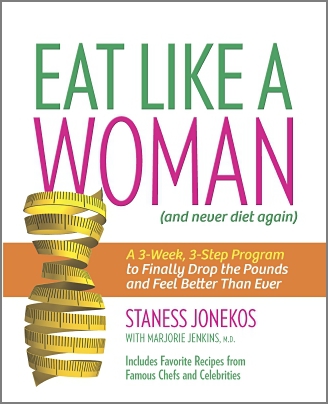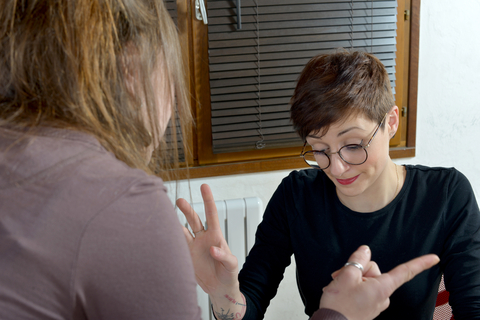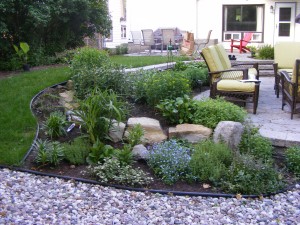Eat Like a Woman: Does Science Support a Different Food Paradigm?
When it comes to science and research, women have long gotten the short of end of the stick. Not only have women been historically excluded from medical research trials, but despite National Institutes of Health regulations mandating the inclusion of women and minorities in clinical trials in order to obtain funding, research on women’s health has continued to lag behind their male counterparts’. Only recently has this issue reared its head again as findings from March, 2014 The Women’s Health Summit demonstrate important disparities in the scientific process that highlight one of the most important issues facing women today:
“When we fail to routinely consider the impact of sex and gender in research, we are leaving women’s health to chance. The evidence on sex differences in major causes of disease and disability in women is mounting, as are the gaps in research.”
Not only are women routinely excluded from research on cardiovascular disease (despite its ranking as the number one killer of women, only 1/3 of clinical trials enroll women and only 1/3 report on sex-specific outcomes), but, women suffer twice as often from depression and yet, fewer than half of laboratory studies utilize female animals to evaluate metabolic differences. And these examples are the tip of the iceberg!
So, it’s no surprise that these gender differences also affect nutrition.
As my friend and menopause colleague Staness Jonekos points out in her new book, Eat Like A Woman (and never diet again): 
- It takes women’s stomachs’ an hour longer than men’s to empty after eating.
- For the most part, women have lower energy expenditure than their male counterparts due mostly to differences in body composition; notably, estrogen plays a major role in energy expenditure, appetite and body weight. An imbalance in hormones that are secreted by one gland can affect hormone levels in other glands.
- The thyroid, which Staness refers to as the ‘Metabolism Mama,’ is important for metabolism, energy, grown and development and the nervous system. When it’s out of whack, it can wreak havoc on weight, appetite and even mimic the symptoms of menopause. Moreover, research has demonstrated a direct interaction between estrogen and direct expression of thyroid sensitive genes; what this means is that if you are using hormones to manage your menopausal symptoms, you’ll want to have your thyroid checked.
- Cortisol, which I’ve written about frequently on Flashfree, is another important player. Produced by the adrenal glands,its primary role in the body is to regulate energy (by producing blood sugar or metabolizing carbohydrates, protein and fats) and mobilize it to areas where is it most needed. Research has shown, however, that women have higher cortisol levels than men, and that certain women –especially those with greater amounts of abdominal fat — may be reacting to a large disruption in the release of cortisol that causes a greater than normal difference between morning and evening levels of the hormone. This disruption is believed to be related, at least in part, to exposure to prolonged physical and mental stress. The psychological component is huge, because it tends to trigger the desire to consumption of food that is high in fat and/or sugar, which also tends to promote abdominal weight gain.
- Staness also writes about the role of neurotransmitters, chemicals released by nerve cells that carry messages between the brain and organs. They can affect mood, appetite, sleep, heart rate, appetite and weight, among other functions. Poor dietary habits (low intake of dietary protein, poor carbohydrate choices or minimal omega-3s, for example) coupled with hormonal imbalances and excessive alcohol or caffeine can lead to neurtransmitter imbalances. The bottom line? Hormonal changes may affect the actions of neurotransmitters, which in turn, affect mood and lifestyle choices. Staness further explains that lifestyle habits can affect hormones, thereby affecting neurotransmitters. Think of an endless loop: chronic stress triggers cortisol, causes weight gain, cravings, affecting serotonin levels and thyroid functioning, which then influence metabolism, cholesterol, etc. WOW!
- Women’s digestion is also distinct from a man’s, in that we taste food differently. Staness explains that women are ‘supertasters,’ with varying sensitivities to bitter flavors depending on hormone levels. Women also have a higher risk for irritable bowel syndrome, acid reflux, acid related ulcers and other conditions due to the size of the esophagus, small intestine, colon and rectum.
Staness writes that “there are many confusing messages about what to eat or not eat surrounding us,” and she poses a critical question: “how can one message or one plan apply to everyone? We are all different and yet our basic needs as women are the same.” Toward that end, she offers up a dietary plan that supports women’s health through each life stage and addresses various dietary controversies, ranging from soy to animal protein to salt to caffeine. And, she reintroduces the food pyramid that she says, is one of the biggest factors contributing to the success of her previous book, The Menopause Makeover. Notably, for all you paleo people out there, the ratios that Staness recommends are similar to the average portions consumed by our Stone Age relatives. The key?
- 25% of your calories should come from healthy fats
- 35% of your calories should come from low-fat, lean protein
- 40% of your calories should come from low- to medium-glycemic carbohydrates
Staness’ program is served up in three steps that includes approaches to meals, healthy emotions and exercise. However, she doesn’t stop there; she’s reached out to her favorite celebs and chef for recipes that should please any palate. And if you are seeking even more information, Staness offers additional tools and resources on her website .
What do you get when you combine sound science and nutrition? A plan that makes eating make sense…for women. Isn’t it time to change the paradigm? This seems like an awfully great place to start.
About Staness…
Staness Jonekos is an award-winning television writer, producer, and director, as well as an author and writer on women’s health issues. Her first book, The Menopause Makeover, was a pioneering work in the field of menopause, a highly visual and inspiring survival guide that challenged the conventional, old-style approach to managing menopause. She is a tireless advocate for women’s health, wellness and empowerment. She has appeared on The Today Show, contributes to The Huffington Post, and has been featured in a variety of publications ranging from The Houston Chronicle to More.com. Her co-author, Marjorie Jenkins, MD, FACP is a Professor in the Department of Internal Medicine, Division of Gender-Specific Women’s Health Director and Chief Scientific Officer, Laura W. Bush Institute for Women’s Health Associate Dean for Women in Health and Science. Her motto? “You have to know the difference to make a difference.”
Read More
Guyside: when we go wrong
Like most of North America, I was horrified to hear of the shooting / stabbing murders of six people in California. Those murders were followed by the suicide of the young man who carried out the mass attack, Eric Elliott Rodger. There’s been a million words said and written already about him, and I’m going to try not to rehash those.
Rodger left behind reams of video and writing about himself. He felt he was unable to “get women,” apparently. He hated women for their rejections, and hated the men who were able to “get” women for their “prowess.” He haunted “Pick-up Artist” and bodybuilding forums online, and seemed to boil with anger at those whose actions left him alone and miserable.
When I was a kid, there were people I went to school with who I quite easily could have seen carrying out an attack like this. Angry, obsessive about guns and violence, mercurial, bitter about women in the extreme. Seething underneath, their rage only surfacing when liberated by alcohol or drugs, even their jokes full of meanness.
None of the people I went to school with ended up doing anything. At least that spectacularly horrible. They drifted out of my orbit a long time ago, becoming the sort of people you only think about when something like this attack happens.
It’s difficult for me to make sweeping prescriptions about what would stop these attacks from happening, what might have stopped this most recent attack. I’m Canadian, and it’s easy — and dishonest — to be superior. We had our own misogynist tragedy in Montreal in 1989. That one left 14 women dead at the hands of someone who blamed “feminists” for his own failures. More recently, five young people were stabbed to death at a house party in Calgary, Alberta. The person charged is the young son of a senior Calgary police officer.
I’m not a parent, so I can’t claim I’m having meaningful chats with my sons about these issues, or caring for their mental health.

A Wikimedia image of the memorial to the 14 engineering students who were murdered in the “Montreal Massacre.”
So I guess all I can say is this: there are people out there who are broken. It might be they’re wired wrong; it might be that circumstances have conspired against them; it might be they’ve authored their own misfortunes. But they’re broken. Most of the time, these broken folk are more harmful to themselves than anyone else. But sometimes, and I don’t think any of us know how to tell when, they decide to take up arms against others.
So what can I, as a man, do about this? A few things, none of which make me feel particularly fulfilled. If there are younger men in your life — sons, nephews, friends — show them a positive model. If you’re concerned about attitudes or behavior that you see, SAY so. Reach out to them. If you see the corrosive attitudes which lay under Rodger, and seem to lie under so many of the perpetrators of this violence, say something about it; do something about it. Advocate for social changes you’d like to see with your political representatives. If I were in the US, I’d be talking about restrictions on firearms ownership and getting in trouble EVERY DAY. Here in Canada, we aren’t plagued by gun violence as our southern neighbours are, so I don’t feel that urgency.
We’ll never live in a world free of hatred, or of the violence that hatred can cause. But doing something to improve the situation is better than doing nothing.
Read MoreReflection
There is something very odd about passing the 50 yard line. Increasingly, I am becoming familiar with loss. And while it is absurd to assume that there is a correlation between entering one’s 50th decade and loss, it does seem that the older I become, the more aware I am of how truly transient life is.
Over the past several months, I have watched friends lose parents and loved ones, friends divorce, friends end relationships, and friends become ill. And just last week, I personally experienced a sudden loss that created a chasm that was so profound that I currently feel as if I am drifting without a clear direction or purpose.
This is what they call midlife, when we are forced to wake up and pay attention. And, perhaps this is why we are advised to live in the moment, because that moment is gone in a blink of an eye and things change so very rapidly.
I awoke this morning with an indescribably heavy heart, tinged with loss and love and hope. And then, I realized that today was Memorial Day. Ironic? I think not.
On this Memorial Day, please take one or two moments to reflect on those women and men who lost their lives protecting our country. The faces may be unfamiliar but they were once someone’s daughter, son, husband, wife, partner, friend or confidante. As I contemplate my loss, I cannot imaging the anguish that these families went through. My loss pales in comparison.
Peace.
Read MoreWorking the ‘Pause…the U.S. Experience
 About a year ago, I wrote a post about a UK study exploring women experiences of working through the menopausal transition. Among the various challenges cited, poor concentration, fatigue, memory issues, depression and loss of self-confidence ranked among the highest. Moreover, the majority of women chose to avoid discussing their symptoms with their managers, making a bad situation even worse.
About a year ago, I wrote a post about a UK study exploring women experiences of working through the menopausal transition. Among the various challenges cited, poor concentration, fatigue, memory issues, depression and loss of self-confidence ranked among the highest. Moreover, the majority of women chose to avoid discussing their symptoms with their managers, making a bad situation even worse.
A more recent survey has been released by The Working Mother Research Institute and not surprisingly, the findings are similar. And, while the methodology is not quite scientific and based on a series of survey blasts, it does serve up some sobering statistics. Among 1,500 women surveyed (ages 45 to 65):
- About one-third cited hot flashes as the most troublesome symptoms in the workplace, and roughly two-thirds said that they occurred daily.
- Similar to their UK counterparts, changes in memory and concentration and fatigue (attributable to sleep disruption) were also among the most troublesome symptoms.
- Almost half (48%) reported that managing their symptoms took a toll on their work life, with 12% passing up more demanding work or promotions as a result.
- The more ‘male’ the work environment, the more that women tried to hide their menopausal symptoms while at work; this distinction was almost two-fold.
- Fewer than one on three women felt comfortable discussing their symptoms with their supervisors and among those who were, again, gender was a strong determining factor.
So, what do these flashing, fatigued women desire in their work environment? Overwhelmingly, one primary ‘want’ shines through: the ability to adjust temperature in their workspace. A close second and third? A flexible dress code and the ability to bring a fan into the workspace.
The bottom line of this survey echoes the UK study: employers need to be more aware that among their female employees ‘of a certain age,’ the menopausal transition can cause some difficulty. And while the solutions are relatively simple, the lack of consideration for an issue creates a problem in and of itself.
According to the North American Menopause Society, approximately 6,000 women enter menopause daily in the United States. Not only are these women living longer but increasingly, they continue working well beyond what was once considered traditional retirement age. So long as women keep working the ‘pause, employers will need to readjust the environment to keep those women happy and productive. Currently, it appears that there is a long way to go to achieve the optimal balance in the workplace.
Read MoreGuyside: In the Garden
In my part of the world, spring has finally given us some warm sunny days. It seems as if the plants in my back yard were impatiently waiting to get on with the business of blooming.
And that meant that my partner and I spent some hours over Canada’s Victoria Day weekend tending our little piece of the planet.
When it comes to gardens, I am more inclined to be a passive appreciator. I don’t know much about flowers, but I do like to look at them and smell them. And for the next six months or so, I am lucky enough to be able to take my notebook out to the garden and work in the middle of what we jokingly call “the cottage.”
But I lack the strategic sense when it comes to our garden. Cathy sees what could be, what needs to move, what needs to split. I don’t. And to be honest, digging and weeding and hoisting stuff isn’t of less interest to me. So when it comes to gardening, I’m the brute force and the cheap labour, doing what I’m told by the person with brains.
But even if you’re like me, there are a lot of benefits to be derived by working in the garden. Even some moderate gardening can have similar effects to other forms of exercise, according to Weight Watchers. One implication of that: prepare for gardening the same way as you would for other forms of exercise. Do a little warmup, stretch, and the like. Most important for me is to vary my tasks. Don’t rake for three hour stretches (not that I could rake for that long in my plot anyway); don’t be bent over weeding for hours. Take breaks and change up the task to keep your muscles limber.
There are also psychological and spiritual benefits of working in the garden. The University of Nebraska College of Public Health published a great two-part article outlining the benefits of gardening. Their focus was not only on your own garden space, but on community gardening. If you live near a community garden, you may not only be able to put food on your own table, but to help others who need it to have the freshest, healthiest food that can be imagined. We grow tomatoes every year, and there’s nothing like a fresh tomato plucked right off the vine, or a pasta sauce made with tomatoes and herbs you grew yourself and harvested that very day.
Maybe it just comes down to some very simple truths: it feels good to take responsibility for even a little part of what we eat. It feels good to be in the sun, to watch the rain come down and help your plants grow, to enjoy the harvest. For a white-collar dude like me, it feels good to get your hands dirty from time to time. It’s nice to be the cheap labour and not have to make decisions once in a while!
Spending time in the garden — whether working or enjoying — gives us windows of time when we can simply let go of the other stuff in our lives and just be in the moment. And damn, it’s nice to be lying in the hammock with a beer in reach, and a book open on your chest, idly looking around at your own patch of green.
Read More








